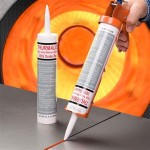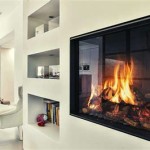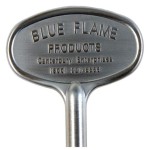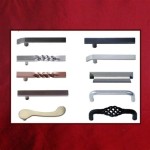Fireplace Mantels: A Modern Design Perspective
The fireplace, a historical focal point of the home, has evolved significantly in both functionality and design. While its primary purpose was once a critical source of heat, contemporary fireplaces are often integrated as aesthetic elements, contributing significantly to the overall style of a living space. The mantel, traditionally a shelf above the fireplace, plays a crucial role in this aesthetic transformation. Modern fireplace mantel design emphasizes clean lines, minimalist forms, and a focus on materials that complement contemporary architectural styles. This article explores the nuances of modern fireplace mantel design, highlighting key considerations and offering insights into creating a sophisticated and visually appealing focal point.
The transition from ornate, heavily detailed mantels to streamlined modern designs reflects a broader shift in interior design preferences. Where historical styles favored elaborate carvings and intricate details, modern design prioritizes simplicity, functionality, and a sense of spaciousness. This philosophy extends to fireplace mantels, where unnecessary ornamentation is often eliminated in favor of clean surfaces and geometric shapes. The goal is to create a mantel that enhances the fireplace without overwhelming the surrounding space or detracting from other design elements within the room.
Material Selection in Modern Fireplace Mantels
The choice of material is paramount in achieving a modern aesthetic for a fireplace mantel. The material not only dictates the visual appearance but also influences the overall feel and ambiance of the room. Several materials are commonly used in modern mantel designs, each with its unique characteristics and advantages.
Wood remains a popular choice, offering warmth and natural beauty. However, in modern designs, wood is typically used in a more refined and understated manner. Light-colored woods such as maple or birch are often preferred for their clean, minimalist aesthetic. The wood is typically finished with a clear sealant or a light stain to showcase the natural grain. Reclaimed wood is another option, providing a rustic touch within a modern context. It's crucial to ensure that reclaimed wood is properly treated to prevent moisture issues and maintain its structural integrity.
Concrete is gaining popularity as a material for modern fireplace mantels. Its inherent strength and versatility allow for the creation of bold, sculptural forms. Concrete mantels can be poured in place or pre-cast, offering flexibility in design and installation. The natural gray tones of concrete complement a wide range of color palettes and add an industrial chic element to the space. Concrete can also be stained or polished to achieve different finishes, further enhancing its versatility.
Metal is another excellent choice for creating a sleek and contemporary mantel. Stainless steel, brushed aluminum, and blackened steel are commonly used. Metal mantels offer a clean and sophisticated look and can be customized with various finishes and textures. Metal is also a durable and low-maintenance material, making it a practical choice for high-traffic areas. The thin profile often achievable with metal allows for a minimalist aesthetic that doesn't visually dominate the room.
Stone is another option, and depending on the stone type, modern mantels can use it for both traditional or sleek designs. Using stone slabs with clean corners or using marble in modern shapes provide a durable and lasting quality.
Design Principles Guiding Modern Mantel Style
Beyond material selection, several design principles guide the creation of a modern fireplace mantel. These principles focus on simplicity, balance, and the integration of the mantel with the surrounding architectural context. Understanding these principles is essential for creating a mantel that is both aesthetically pleasing and functionally sound.
Simplicity is a core tenet of modern design. In the context of fireplace mantels, this translates to clean lines, minimal ornamentation, and a focus on essential form. Avoiding excessive detailing and decorative elements allows the inherent beauty of the materials to shine through. A simple rectangular or square mantel, for example, can create a strong visual impact without overwhelming the space.
Balance is another crucial consideration. The mantel should be proportionate to the fireplace opening and the overall size of the room. A mantel that is too large can feel overwhelming, while one that is too small can appear insignificant. Careful attention should be paid to the dimensions of the mantel and its relationship to the surrounding elements. The use of negative space can also contribute to a sense of balance, allowing the mantel to breathe and preventing it from feeling cluttered.
Integration with the architectural context is essential for creating a cohesive and harmonious design. The mantel should complement the style of the home and the surrounding interior. In a minimalist space, a simple, understated mantel made of concrete or metal might be the most appropriate choice. In a more traditional space, a wooden mantel with subtle detailing could provide a bridge between the old and the new. The color palette should also be carefully considered to ensure that the mantel blends seamlessly with the surrounding décor.
The placement of the mantel relative to the firebox is also important. Often, modern mantels are set flush with the surrounding wall, creating a clean and seamless appearance. In other cases, the mantel may be slightly recessed or projected forward to add visual interest. The height of the mantel should be carefully considered to ensure that it is both aesthetically pleasing and functional. A mantel that is too high can be difficult to reach, while one that is too low may not provide adequate protection from the heat of the fire.
Integrating Technology and Functionality
Modern fireplace mantels are not only aesthetic elements but also opportunities for integrating technology and enhancing functionality. The incorporation of features such as built-in storage, media centers, and concealed wiring can transform the mantel into a versatile and practical component of the living space.
Built-in storage is a valuable addition to any fireplace mantel. Shelves, cabinets, or drawers can be incorporated into the design to provide storage for books, media equipment, or other items. This can help to declutter the living space and create a more organized and functional environment. The storage compartments can be concealed behind sleek doors or integrated seamlessly into the mantel's design.
The integration of media centers is another popular trend. Modern mantels can be designed to accommodate televisions, sound systems, and other electronic devices. Concealing the wiring behind the mantel creates a clean and uncluttered look, while providing easy access for maintenance and upgrades. The mantel can also be designed to incorporate shelving or cabinets for storing DVDs, gaming consoles, and other media-related items.
Concealed wiring is a crucial aspect of modern fireplace mantel design. Hiding the unsightly cords and cables that often accompany electronic devices creates a cleaner and more streamlined appearance. This can be achieved by running the wiring behind the mantel and through the walls, or by using cable management systems to keep the cords organized and out of sight. Thoughtful planning and execution are essential to ensure that the wiring is both safe and accessible.
Furthermore, the inclusion of lighting elements can enhance the ambiance of the fireplace area. Recessed lighting can be installed above the mantel to highlight artwork or decorative objects. LED strip lighting can be integrated into the mantel's design to create a subtle and sophisticated glow. The lighting can be controlled with a dimmer switch to adjust the brightness and create different moods.
Modern fireplace mantel design is a constantly evolving field, influenced by emerging trends and technological advancements. By embracing simplicity, balance, and functionality, it is possible to create a mantel that is not only visually appealing but also enhances the overall living experience. Careful consideration of material selection, design principles, and technological integration is essential for achieving a truly modern and sophisticated fireplace mantel.

24 Unique Fireplace Mantel Ideas Modern Designs

7 Contemporary Fireplace Mantel Design Ideas For Interior Designers

3 Best Modern Fireplace Mantel Decor Ideas Decorilla Interior Design

Fireplace Design Ideas Materials Colors Styles In 2024 Bodaq

53 Best Fireplace Mantel Designs To Ignite Your Creativity Contemporary Living Room With

Collection Of Premium Wood Fireplace Mantels Dogberry

Fireplace Mantels And Surrounds

Choosing A Fireplace Mantel Which Look Is Right For You

Contemporary Fireplace Mantel Ideas And Inspiration Hunker

36 Fireplace Decor Ideas Modern Mantel








